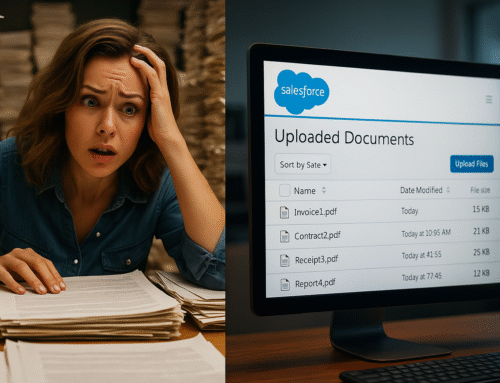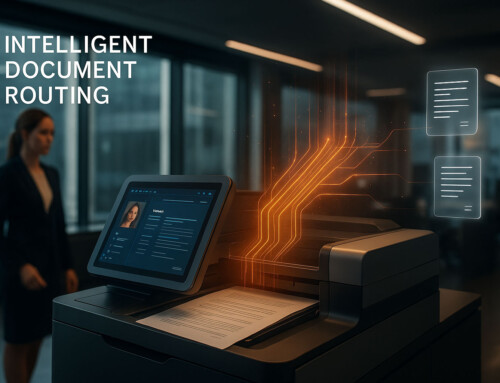Imagine this: The Amazon Rainforest is on your desk (literally THE Amazon forest), slowly vanishing under a deluge of printed documents, memos, and reports. The horrifying reality is that the average office worker uses 10,000 sheets of paper annually, contributing massively to deforestation and environmental degradation. Fortunately, there is a solution that not only enhances business efficiency but also significantly reduces environmental impact: document scanning software like ccScan.
The Environmental Impact of Traditional Paper Use
The world consumes an astounding 400 million tons of paper each year. This rampant paper use has dire environmental consequences, including deforestation, increased carbon footprints, and overflowing landfills. The production of a single ton of paper requires 17 trees and 20,000 gallons of water, while emitting greenhouse gases equivalent to driving a car for 1,000 miles.
The implications are far-reaching. Deforestation leads to loss of biodiversity, disruption of water cycles, and contributes to climate change. Moreover, paper production is energy-intensive, further exacerbating environmental issues. As we become increasingly aware of our environmental footprint, businesses are seeking ways to mitigate their impact. One significant step towards sustainability is reducing paper usage, which can be effectively achieved through the implementation of document scanning software.
Benefits of Document Scanning Software
Reduction in Paper Usage
Transitioning to digital documents with document scanning software like ccScan can drastically cut down on paper use. By converting physical documents into digital formats, businesses can reduce their paper consumption by up to 90%. This shift not only saves trees but also reduces the energy and resources needed to produce, transport, and dispose of paper.
Digital documents can be easily shared, stored, and retrieved, eliminating the need for multiple physical copies. This not only reduces paper waste but also enhances operational efficiency. Employees can access the information they need with just a few clicks, improving productivity and collaboration. Furthermore, digital documents are less likely to be lost or damaged, ensuring that critical information is always available when needed.
Decreased Carbon Footprint
Digital document storage eliminates the need for physical storage spaces, reducing the carbon footprint associated with maintaining such facilities. Furthermore, the energy consumption of printers, copiers, and fax machines is significantly reduced when fewer documents are printed. This change contributes to a lower overall carbon footprint for businesses.
By reducing reliance on physical documents, businesses can also decrease their energy consumption. Digital documents can be stored in the cloud, which is more energy-efficient than traditional data centers. Moreover, cloud storage providers are increasingly using renewable energy sources, further reducing the environmental impact of digital storage.
Waste Reduction
Digital archiving via document scanning software minimizes paper waste in offices. With features like Optical Character Recognition (OCR), businesses can create searchable digital documents, reducing the need for multiple physical copies. This capability is crucial for maintaining an efficient, paperless office environment.
In addition to reducing paper waste, digital archiving also reduces the need for other office supplies such as folders, binders, and filing cabinets. This not only saves money but also reduces the environmental impact of producing and disposing of these items. By embracing digital solutions, businesses can create a more sustainable and cost-effective workplace.
Features of Document Scanning Software that Promote Sustainability
Optical Character Recognition (OCR)
OCR technology is a game-changer for digital document management. It allows businesses to convert scanned images into searchable text, making document retrieval fast and efficient. By reducing the need for printed documents, OCR helps cut down on paper use and supports sustainability efforts.
OCR technology also improves data accuracy and accessibility. Employees can quickly find the information they need without having to sift through piles of paper. This not only saves time but also reduces the risk of errors. Furthermore, OCR technology can be used to automate data entry, reducing the need for manual processing and further enhancing efficiency.
Cloud Integration
The integration of document scanning software with cloud storage solutions such as Google Drive, Salesforce, and Box ensures that documents are accessible from anywhere, at any time. This accessibility reduces the need for physical storage and enhances data security. Furthermore, cloud storage is energy-efficient compared to traditional data centers.
Cloud integration also offers scalability and flexibility. Businesses can easily increase their storage capacity as needed without having to invest in additional hardware. This not only saves money but also reduces the environmental impact of producing and disposing of physical storage devices. Additionally, cloud storage providers offer robust security features, ensuring that sensitive information is protected.
Automated Workflow
Automation is a key feature of document scanning software that promotes sustainability. Automated processes reduce the need for printed documents by digitizing and organizing information with minimal human intervention. For instance, ccScan’s advanced automation capabilities include barcode detection and OCR, which streamline document capture and management.
Automated workflows also improve efficiency and accuracy. Tasks that would typically require manual input can be completed automatically, reducing the risk of errors and freeing up employees to focus on more strategic activities. This not only enhances productivity but also supports sustainability by reducing paper use and waste.
Implementing Document Scanning Software in Your Office
Steps to Transition to a Paperless Office
Transitioning to a paperless office involves several steps:
- Initial Assessment and Planning: Evaluate your current document management practices and identify areas for improvement.
- Choosing the Right Document Scanning Software: Select a solution like ccScan that offers advanced features such as OCR, barcode detection, and cloud integration.
- Training Employees and Setting Up Workflows: Ensure that employees are trained on the new software and that workflows are established for efficient document capture and management.
Transitioning to a paperless office also requires a cultural shift. Employees need to be encouraged to adopt digital solutions and reduce their reliance on paper. This can be achieved through training and awareness programs that highlight the benefits of a paperless office. By fostering a culture of sustainability, businesses can ensure the long-term success of their paperless initiatives.
Overcoming Challenges
Adopting new technology can be challenging, but the benefits outweigh the difficulties. Addressing resistance to change involves clear communication about the environmental and efficiency gains of digital document management. Ensuring data security and compliance with regulations is also crucial for a smooth transition.
To overcome resistance to change, businesses should involve employees in the transition process. By soliciting feedback and addressing concerns, businesses can build buy-in and ensure a smooth transition. Additionally, businesses should provide ongoing support and training to help employees adapt to the new system.
Measuring Success
To gauge the success of your paperless initiative, establish key performance indicators (KPIs) such as paper usage reduction, carbon footprint decrease, and employee productivity improvements. Regularly review and optimize your document management practices to maintain sustainability goals.
Tracking progress and celebrating milestones can also help build momentum and encourage continued adoption of digital solutions. By regularly reviewing and optimizing document management practices, businesses can ensure that they continue to achieve their sustainability goals.
Future Trends in Green Office Practices
Advances in Document Scanning Technology
Emerging technologies in document scanning promise even greater sustainability benefits. Advances in OCR, artificial intelligence, and machine learning will further enhance automation and accuracy, making digital document management more efficient and eco-friendly.
Future developments may include improved data extraction and analysis capabilities, enabling businesses to gain deeper insights from their documents. Additionally, advancements in mobile scanning technology will allow employees to capture and manage documents on the go, further enhancing flexibility and efficiency.
Broader Environmental Initiatives
Integrating document scanning with other green practices, such as energy-efficient office equipment and recycling programs, can amplify the environmental benefits. Businesses have a crucial role in promoting sustainability by adopting and advocating for green practices.
By implementing comprehensive sustainability programs, businesses can reduce their environmental impact and enhance their corporate social responsibility (CSR) initiatives. This not only benefits the environment but also strengthens the business’s reputation and competitive advantage.
In closing
Document scanning software like ccScan is not just a tool for improving business efficiency; it is a critical component of a sustainable, green office. By reducing paper usage, decreasing carbon footprints, and minimizing waste, businesses can significantly contribute to environmental preservation while enhancing their operational efficiency. The future of office work is digital, and embracing this change is essential for both business success and environmental sustainability.






